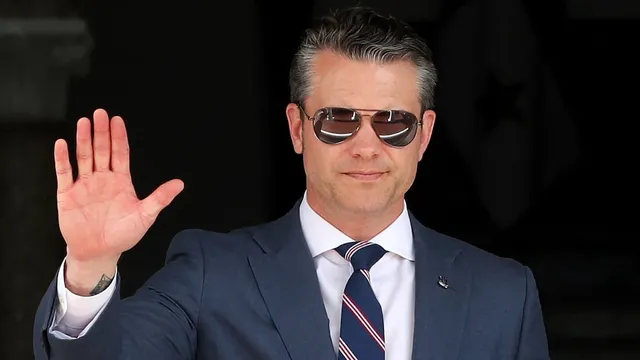
U.S. vows to reclaim control over Panama Canal from Chinese influence
2025-04-09 22:06- During a recent visit to Panama, U.S. Secretary of Defense Pete Hegseth highlighted concerns about Chinese influence over the Panama Canal.
- The canal, crucial for U.S. trade, is currently affected by a pending sale of port operations from CK Hutchison to BlackRock.
- Hegseth reaffirmed the U.S. commitment to collaborate with Panama to ensure the canal's security and integrity against potential threats.
Express your sentiment!
Insights
Amid rising tensions between the United States and China, U.S. Secretary of Defense Pete Hegseth recently concluded a visit to Panama, where he reaffirmed America’s commitment to reassert control over the Panama Canal, which has become a focal point of geopolitical strife. During this visit, Hegseth emphasized that China poses ongoing security threats to the vital waterway, which accounts for a significant portion of U.S. trade. This assertion aligns with President Donald Trump's rhetoric suggesting that China effectively controls the canal, despite Panama’s counterclaims that it administers the canal independently. Hegseth's trip included discussions with Panamanian President José Raúl Mulino, who has publicly rejected accusations of Chinese interference in canal operations. However, the announcement of a pending sale of CK Hutchison's controlling stake in key canal ports to BlackRock has raised questions about Chinese influence and control over critical infrastructure in the region. The U.S. sees the potential Chinese presence in these ports as a risk, fearing possible espionage and security challenges. Hegseth noted that the collaboration between the U.S. and Panama is aimed at maintaining the canal's security and ensuring its neutrality for international shipping. Recent actions have indicated Panama's pivot towards the U.S. amidst geopolitical tensions. Earlier this year, Panama opted to withdraw from its agreements with China's Belt and Road Initiative, a move interpreted as a sign of alignment with U.S. interests. This change signifies Panama's acknowledgment of the significance of maintaining its sovereignty and security in the face of China’s expansive influence in Latin America. The situation surrounding the canal emphasizes the broader geopolitical struggle between the two countries, with the U.S. enhancing defense cooperation with Panama to combat perceived encroachments by China. Hegseth's visit, the first of a Defense Secretary to Panama in decades, symbolizes a renewed commitment to American interests in the region, aiming to ensure that the Panama Canal remains secure and accessible for global trade.
Contexts
The Panama Canal, a pivotal maritime route, connects the Atlantic and Pacific Oceans, significantly enhancing global trade. Since its inception, the canal has played a crucial role in facilitating shipping efficiency, allowing vessels to bypass the lengthy and hazardous route around the southern tip of South America. The canal's operations are central to its functionality, managed by the Panama Canal Authority (ACP), an autonomous government agency established in 1999 when control of the canal was transferred from the United States to Panama. This ownership structure has allowed Panama to maintain a strategic economic asset while also contributing to the nation’s development and global trade positioning. The current ownership structure of the Panama Canal reflects the nation's emphasis on maintaining sovereignty while promoting international commerce. The ACP oversees the management and operations of the canal, focusing on the maintenance, expansion, and modernization of its facilities. With the expansion project completed in 2016, the canal now accommodates larger vessels, known as New Panamax or Neo-Panamax ships, which have transformed shipping logistics and trade routes. This expansion has not only increased the canal's capacity but has also allowed it to remain competitive with other major global shipping routes. The operations of the Panama Canal are marked by an intricate balance of transactional efficiency and environmental considerations. The ACP employs advanced technologies and operational strategies to optimize transit times and minimize delays, thereby catering to the growing demand for maritime transport. Additionally, sustainability initiatives are being integrated into canal operations, including the management of water resources and the implementation of energy-efficient practices. As the shipping industry grapples with environmental challenges, the canal is adjusting its management approaches to enhance overall operational sustainability while also meeting international shipping standards. Looking forward, the Panama Canal is positioned to adapt to changes in global trade patterns and shipping technologies. With ongoing investments in infrastructure and technology, the ACP continues to assess and respond to the needs of the maritime industry. The canal's strategic significance is likely to grow, especially as economic trends shift and international logistics evolve in response to global demands. Ensuring that the Panama Canal remains an efficient conduit for trade is essential not only for Panama's economy but also for the wider international trade community.